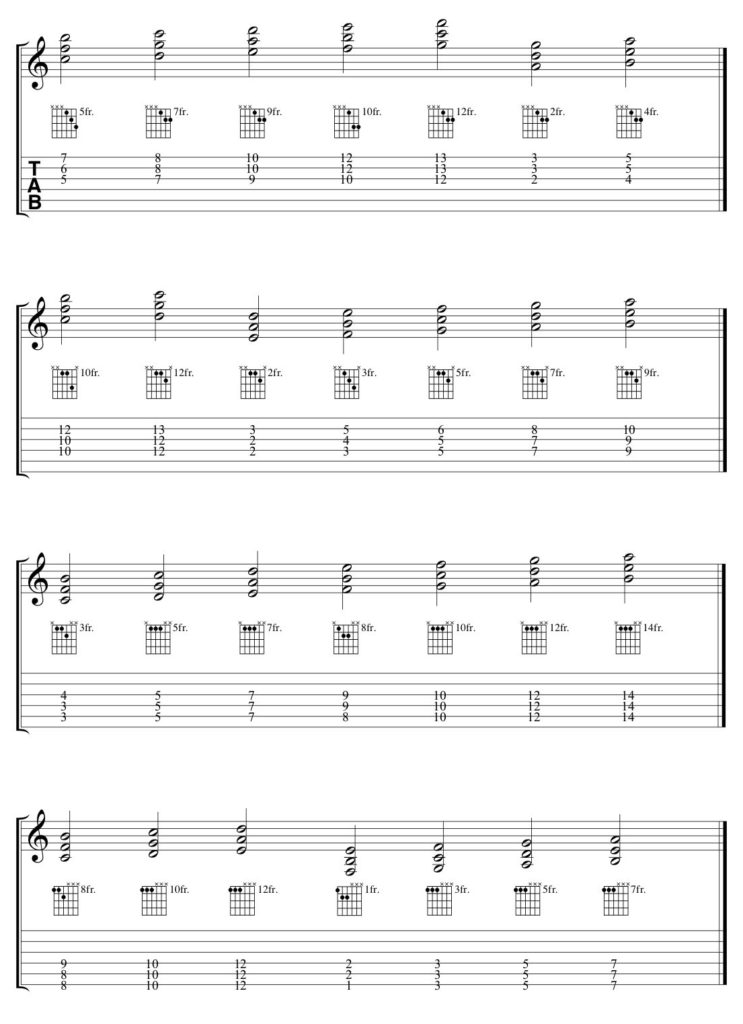Quartal Harmony.
All music theory books about harmony, all deal with what is called “tertial harmony”.
This is the foundation of all our chords: stacking 3rd intervals on top of one another.
While the study of tertial harmony covers a very large part of everything there is to know about chords, and while that type of harmony is the foundation of all our composition and music theory, there are other types of note combinations that you want to know about, like for example drones, or clusters, or quartal harmony.
In this blog, we’ll cover quartal harmony, which is what you call chords that are built stacking 4th intervals.
Let’s pick a scale: C major scale.
In order to get a 3 note chord, you need to stack 2 intervals.
Stacking two 4ths on every note in the C major scale, we get following note combinations:
- C F B
- D G C
- E A D
- F B E
- G C F
- A D G
- B E A
Looking at the formulas for each of these chords, they all have a root, a 4th and some type of 7th (major 7th or minor 7th)
That makes all these chords sus chords.
The names of these above chords are:
- C F B = Cmaj7sus4
- D G C = D7sys4
- E A D = E7sus4
- F B E = Fmaj7#11 (no sus4 here because F to B is not a perfect 4th but a tritone)
- G C F = G7sus4
- A D G = A7sus4
- B E A = B7sus4
You can also invert all these chords, which would give you sus4 and sus2 chords.
If this doesn’t make sense, it will over time when I cover this in another blog.
In today’s blog, I only want to cover the root position quartal harmony chords, the ones mentioned above, not the inversions for now.
As you know, I always like to be structured and organized in everything I do, ESPECIALLY my teachings.
In this blog, you will learn all the fingerings for the above 3-note voicings.
In future blogs we’ll also cover the 4 string quartal harmony voicings, the 5 string voicings, to finally the voicings where you play big-sounding chords consisting of nothing but 4th intervals, covering all 6 strings.
All this is in the key of C major.
Here are the 3 string voicings:

One fun way to practice this:
Play along with any song or backing track you like in the key of C. Instead of soloing with scales and notes, you’re soloing with 3 note chords, moving around on 1 string set.
Here’s how to play the voicings and how to solo with them
Conclusion
Hit me up anytime at vreny@zotzinmusic.com if you have any questions, or if you would like to book a lesson.
These free lessons are cool, but you will never experience the progress, joy, and results that my students experience in lessons when you’re learning by yourself from blogs and videos.
That is why people take lessons: way better results and progress, much more complete information, exposed to way more creative ideas than you can get from a blog or YouTube video.
There is only so much that self-study can accomplish.
If you want to see amazing results and progress in your guitar playing, buy your first lesson here and get started ASAP.
You’ll impress your friends and loved ones in no time with your guitar playing!
Consider donating any small amount to help me keep this blog going.
Thank you for your support!


